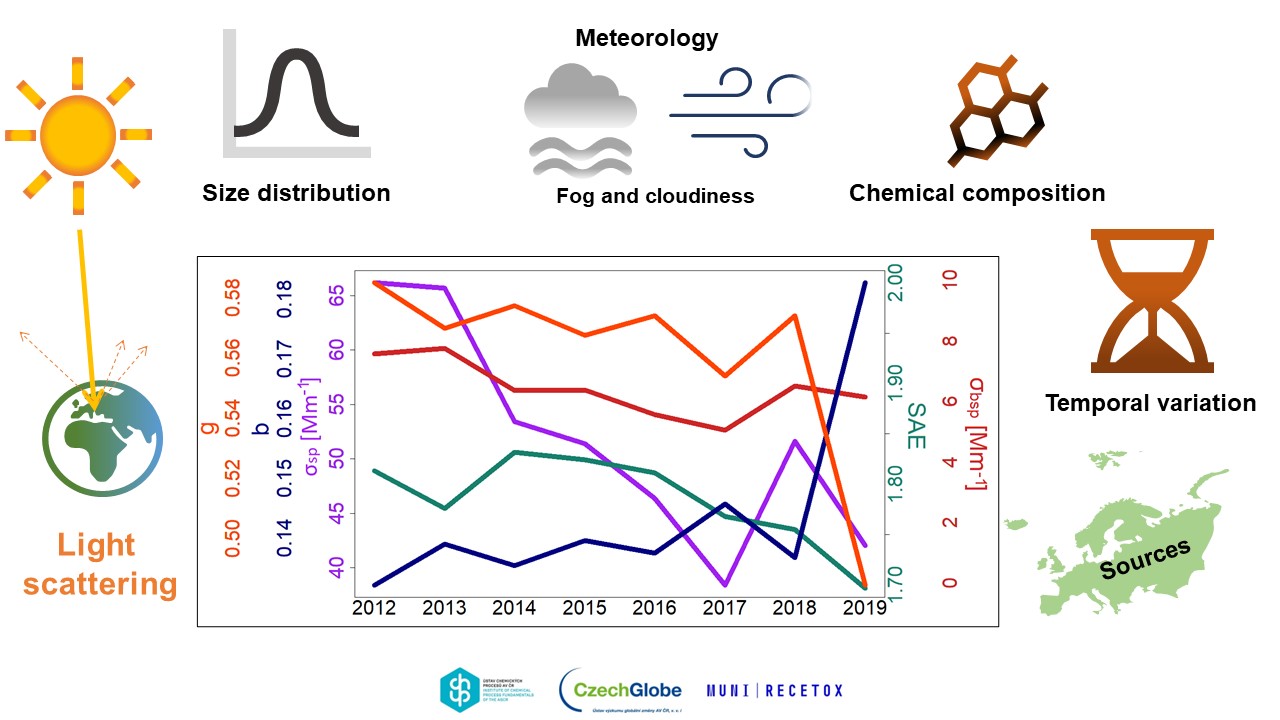A seven-year-based characterization of aerosol light scattering properties at a rural central European site
Atmospheric aerosols are small solid or liquid particles in the atmosphere, ranging in size from 1 nm to 100 μm. They have a significant impact on human health, the natural water cycle, and the Earth’s radiation budget. They can affect climate either directly by scattering or absorbing incoming solar and outgoing infrared radiation, or indirectly by modifying cloud properties. Radiation scattering by aerosols has a dominant cooling effect, reducing the amount of solar radiation reaching the Earth’s surface. This scattering depends primarily on particle size, concentration, and chemical composition, and partially offsets the greenhouse effect. However, global efforts to reduce anthropogenic emissions into the atmosphere and to improve air quality are leading to a weakening of the aerosol cooling effect. The total effect of aerosols on climate remains one of the biggest uncertainties in climate model calculations.
Our study aimed to characterize the total and backscattered light (σsp and σbsp) on aerosol particles (2012-2019) and the associated climate forcing parameters at the background atmospheric station National Atmospheric Observatory Košetice (NAOK). Light scattering was measured with the TSI 3563 nephelometer instrument at three wavelengths. The influence of meteorological parameters (cloud cover, fog) on aerosol scattering properties was also investigated. We observed a continuous decrease in the total light scattering on aerosols, but also an increase in the ability of aerosols to scatter radiation back to its source, thus enhancing the cooling effect on the climate at the NAOK. We observed an increase in the average aerosol size over time, probably due to reduced emission of fresh aerosol particles from different sources. The highest dispersion was observed in the winter months due to increased emissions from domestic heating and increased atmospheric stability. The presence of fog and full cloud cover contributed to an increase in particle scattering, but also to a decrease in their cooling effect, probably due to the presence of larger diameter particles.
 |
 |
- Suchánková L.*, Mbengue S., Zíková N., Holubová Šmejkalová A., Prokeš R., Holoubek I., Ždímal V.: A seven-year-based characterization of aerosol light scattering properties at a rural Central European site. Atmos. Environ. 2024, 319(15 February), 120292. doi: 10.1016/j.atmosenv.2023.120292